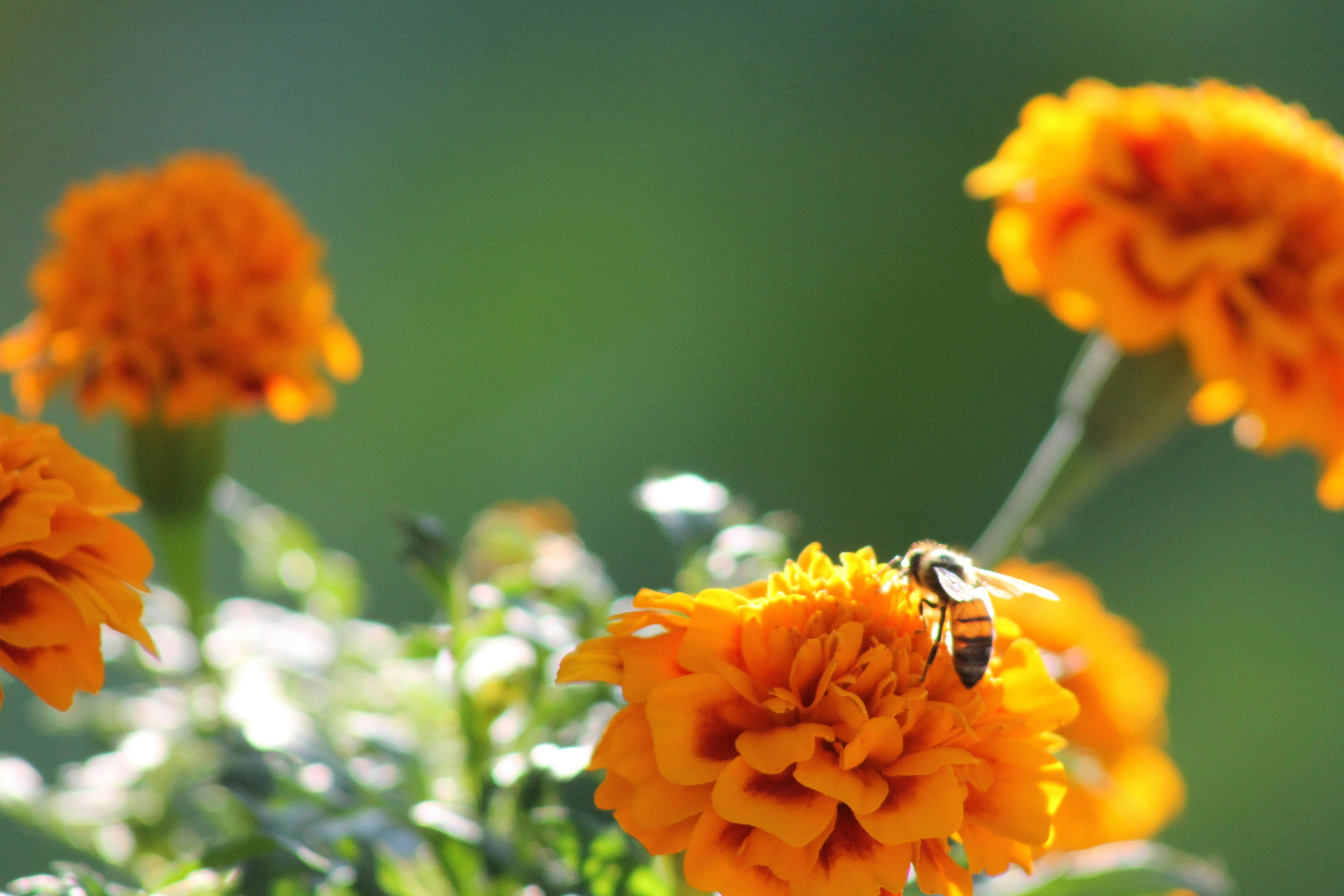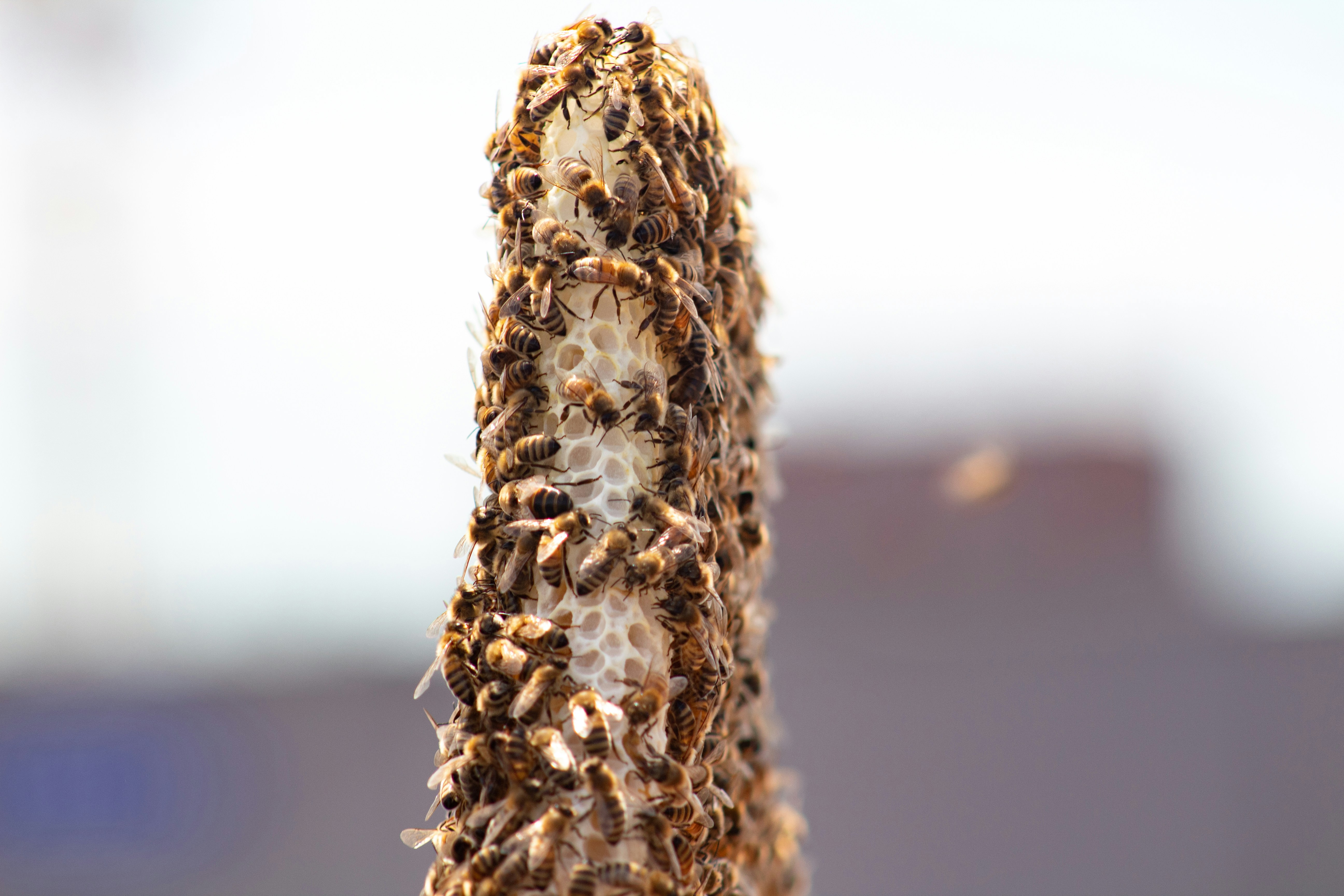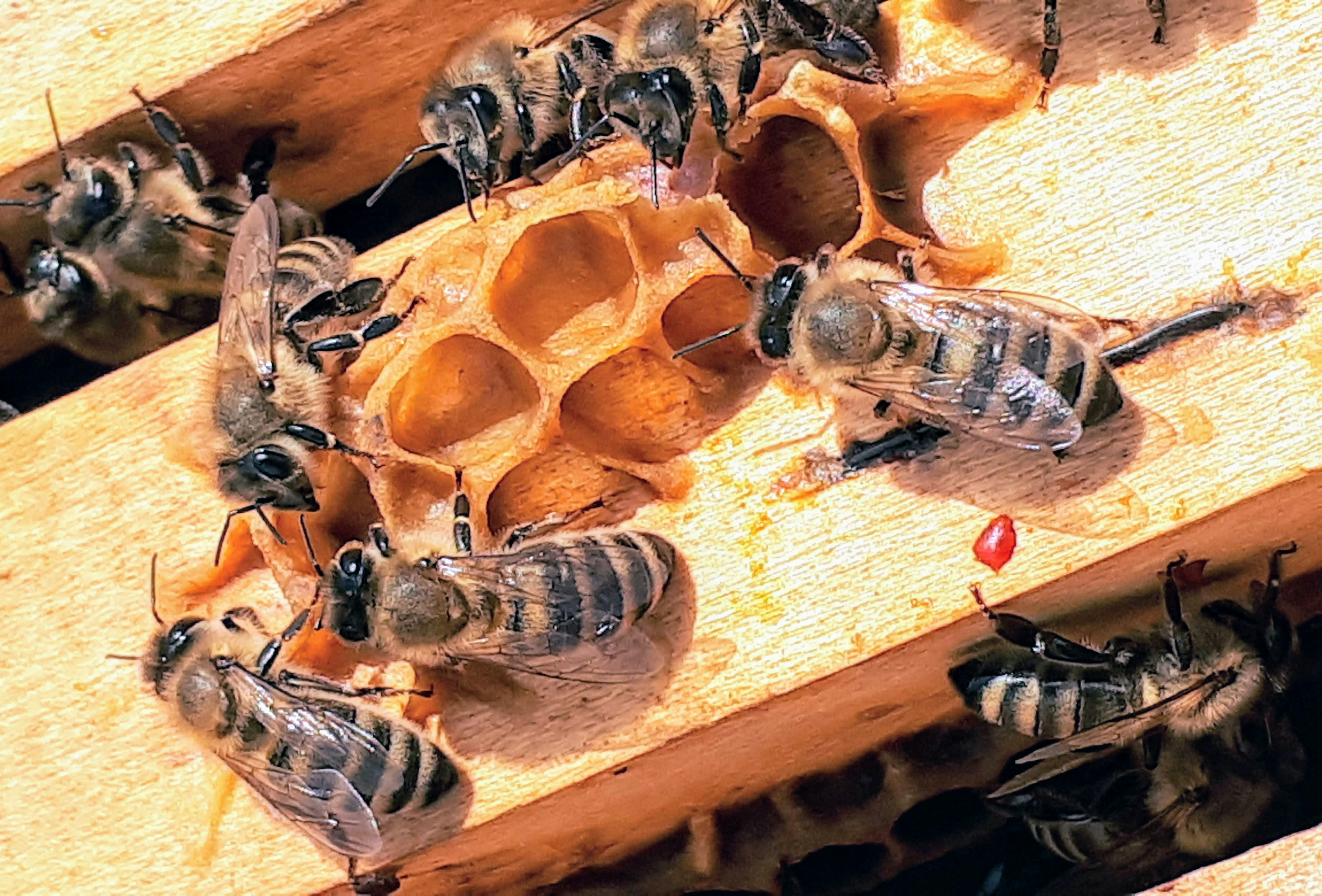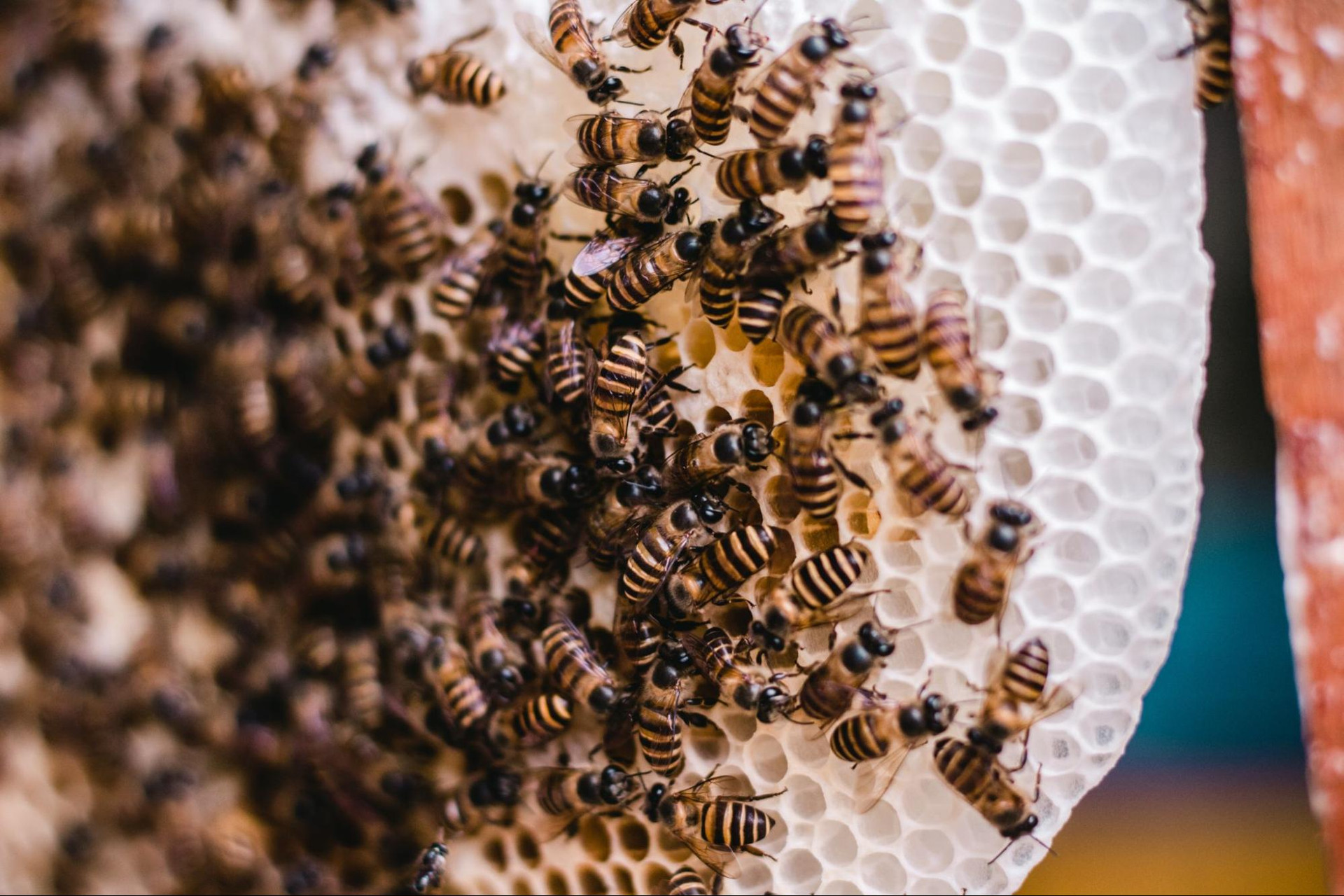How Do Honey Bees Create Beehives?
Honey bees spend most of their lifespans, which vary depending on the time of year, building, protecting, and working for their hive. From housing the brood to storing reserves of precious honey, the hive is the hub of a honeybee colony’s life. This may seem obvious, but we don’t often stop to ask ourselves where these hives come from and how they’re made. So, how do honey bees create beehives? This guide has all the answers.
Materials Used in Beehive Construction
Honey bee hives are marvels of natural architecture born from the industrious efforts of honeybees. A key element of these creations is the materials used in their construction. Understanding these materials offers a fascinating insight into the world of these remarkable insects.
Beeswax: The Building Blocks
The primary ingredient in beehive construction is beeswax. They’re a remarkable substance produced by worker bees, who have specialized glands that convert the sugar contents of honey into this wax. This wax, when secreted, forms thin flakes or scales, which are then chewed and shaped by the bees, effectively forming the building blocks for the hive.
The properties of beeswax make it highly appealing for construction. It’s pliable, shaping easily in response to the worker bees’ manipulation, yet also robust enough to form the solid, stable structures required for the hive. Additionally, beeswax has a relatively low melting point, making it moldable at the hive’s typical temperatures.
Combining Beeswax with Propolis
Beeswax alone isn’t sufficient for the creation of a sturdy, long-lasting hive. This is where propolis or “bee glue” comes into play. Propolis is a resinous substance that bees gather from tree buds and other vegetation, and it’s mixed with saliva, beeswax, and pollen to produce a robust, adhesive material.
This material fortifies the hive, sealing cracks and smoothing out surfaces. Not only does it strengthen the hive’s structure, but it also serves a critical role in maintaining the hive’s hygiene. Propolis has powerful antibacterial and antifungal properties, helping to keep the hive disease-free.
Pollen and Nectar

Bees also incorporate pollen and nectar into the hive-building process. Pollen serves as a protein-rich food source that fuels the bees during their industrious construction efforts. Collected from flowers, it’s mixed with nectar and bee enzymes to create “bee bread,” an essential food for the hive that’s stored within its combs.
Nectar plays a pivotal role, too, acting as a binding agent when it’s added to the mix. The high sugar content of nectar, when evaporated and fermented by the bees, creates a viscous substance. This helps to further strengthen the hive and ensures the materials bind efficiently during construction.
The Usage of Natural Elements
Honey bees ingeniously use available environmental resources to supplement their hive construction. Components like soil particles, plant pieces, or small stones are incorporated to enhance the hive’s durability and to ensure it blends with the surroundings.
This usage is unique, with bees adapting the materials to suit specific needs, such as enhanced structural strength during harsh weather or added camouflage for protection. This showcases their remarkable versatility and resourcefulness in building their complex homes.
Spatial Considerations for Hive Building
When building a hive, honey bees conduct a strategic process known as swarming to find the perfect home location. Worker bees, also referred to as scout bees, fly out in search of potential places. Their considerations include the size of the cavity, its height off the ground, its orientation towards the sun, and its proximity to sources of food and water.
Once a suitable location is identified, the scout bees return to the swarm and communicate their findings through a waggle dance. This dance informs the other bees about the direction and distance to the proposed site. Upon consensus, the swarm then relocates to the chosen location to begin hive building.
Hive placement is thus not a random occurrence. The survival of the colony hinges on it, making this process an integral aspect of bee behavior, necessitating precision, communication, and consensus from all members.
| Bee Informed: Honey bees prefer locations with direct sunlight in the morning. This helps stimulate the bees’ activity earlier, maximizing the time they have for foraging. |
Honeycomb Shape
Now that you know how honey bees create beehives, you might be wondering why they make them the way they do. The hexagonal cells of a honeycomb are the most efficient layout for a hive. It creates a large amount of space in which the bees can store honey or raise the brood, allowing them to make the most out of each cell.
At the same time, the flat edges allow the bees to perfectly align honeycomb cells next to one another, leaving no wasted space or wax between them. Honey bee hives are a masterpiece of structure and productivity. From the efficient use of resources to the valuable labor of the worker bees within, it’s no wonder why a healthy colony is so prosperous!
Hive Layout
Natural beehives in the wild often take shape from tree branches or rock crevices. These hives, with their disc-like structures, are purely the work of the bees themselves. However, beekeepers have introduced man-made hives, offering protection and simplifying colony management.
Man-made hives come in different forms, from traditional hive boxes to modern structures designed for convenience and efficiency. Bees adapt impressively to these set structures, testifying to their flexibility and instinctive drive to create suitable environments.
Contributing to the hive’s unique layout, bees have proven that they can survive across diverse habitats, using even urban environments to their advantage. Regardless of the hive’s style, a product of nature or human influence, bees continue to demonstrate their unique resilience and adaptability.
The table below compares the characteristics, advantages, and disadvantages of these different types of hives.
| Type of Beehive | Characteristics | Advantages | Disadvantages |
| Natural Beehives | Beeswax and propolis | Blends with surroundings | Limited control over health and productivity |
| Traditional Man-Made Beehives | Straw, wood, or mud | Controlled environment, easy honey extraction | Requires regular maintenance |
| Modern Man-Made Beehives | Plastic and foam, movable frames | Easy maintenance and inspection, better protection | Higher cost, not suitable for all bees |
The Social Structure during Construction
In bee colonies, every member contributes significantly to beehive construction. This collective effort is guided by their defined social structure, with roles assigned based on factors like age and caste.
Division of Labor
A hallmark of bee colonies is their efficient division of labor, especially during hive construction. There are three castes within a colony—the queen bee, drones, and worker bees, each possessing distinct roles. The age, caste, sex, and time of year are all factors that determine their responsibilities within the hive.
While the queen’s role is primarily to lay eggs and drones exist to fertilize the queen bee, the worker bees take on the lion’s share of constructing and maintaining the hive. These worker bees are female bees that haven’t matured to queens. Their tasks evolve as they age, switching from nursing and cleaning duties within the hive to construction, foraging, and defense responsibilities.
Worker Bees: The Builders

When a location for a new hive has been decided, worker bees accumulate and utilize materials like beeswax comb and propolis to craft intricate, hexagonal cells. Despite their modest size, these worker bees construct thousands of honeycomb cells in the hive for the purpose of storage and breeding.
The transition from a worker bee to a builder is guided by the age and needs of the colony. Beginning their life performing tasks within the hive, as they age, their wax glands mature, enabling beeswax production. They “age into” the role of builders, revealing a social structure that’s both sophisticated and efficient.
Role of the Queen and Drones
The queen and drones also contribute to the construction process, albeit indirectly. The queen’s primary role is to lay eggs and provide a steady population for the colony. Although she doesn’t physically partake in the building process, her role is critical in sustaining and replenishing the colony’s workforce.
On the other hand, drones or male bees have only one purpose—to mate with the queen. They do not contribute to the building process and spend most of their time inside the hive, waiting for a virgin queen to take her nuptial flight. Their role may seem negligible in the scope of construction, but they are crucial for reproduction and the eventual expansion of the hive.
Communication: Pheromones and the Waggle Dance
Bees primarily use pheromones and the waggle dance as communication during hive construction. Pheromones, chemical signals produced by bees, communicate various messages, including orienting bees during construction and alerting the colony to protect the hive when threatened.
The waggle dance is a more complex form of communication performed by scout bees to indicate the location of good food sources and potential hive sites. This intricate dance informs the other bees of the direction and distance to the recommended site. The interplay of pheromones and dance routines orchestrates the harmonious execution of hive construction.
| Bee Talk: While the waggle dance may be the most famous of bee communication methods, bees actually use a variety of dances to convey different types of information to their fellow colony members. |
Hive Creation: A Testament to Adaptability

The tireless endeavors of bees, guided by their remarkably organized social structure and ingenious communication methods, result in the natural architectural wonder of a beehive. This process is not just about the construction of a dwelling place but also underlines the resilience, adaptability, and immense sense of community within a bee colony.
Hive creation is an embodiment of survival and prosperity for bee colonies. As they engage in this intricate venture, honey bees exemplify the potency of collective effort. Their remarkable craftsmanship goes beyond the realms of nature, offering a wealth of learnings in adaptability, precision, and sustainability.

